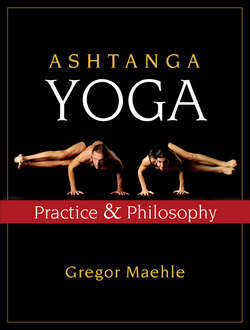Читать книгу Ashtanga Yoga - Gregor Maehle - Страница 24
На сайте Литреса книга снята с продажи.
Action and Counteraction / Posture and Counterposture
ОглавлениеThese opposites also exist as fundamental differences between the actions that transport us into a posture and those that maintain it. As a rule of thumb, actions that take us into a posture need to be reversed when working in the posture itself. For example, while forward bending is performed by the hip flexors, once we are in the posture we use the hamstrings, which are hip extensors.2 Backbending is performed by the trunk extensors, but once in the posture we counteract these by engaging the abdominal muscles. To arrive in Baddha Konasana we use the external hip rotators; once in the posture we use the internal hip rotators.
The fact that every action performed in yoga does not continue endlessly means that we automatically perform the opposing action to counteract it and so reach a balanced state. As each posture is balanced by a counterposture, so each action within the posture is balanced by its counteraction until a neutral position is reached.
The neutral position is that in which the initial action has been balanced and correct alignment has been achieved. Alignment is correct when steadiness and lightness in the posture are achieved, holding it becomes effortless, and meditation is possible. This state is reached when all actions are balanced by opposing actions.
The posture remains alive and active as we continually play with balancing these opposites.
